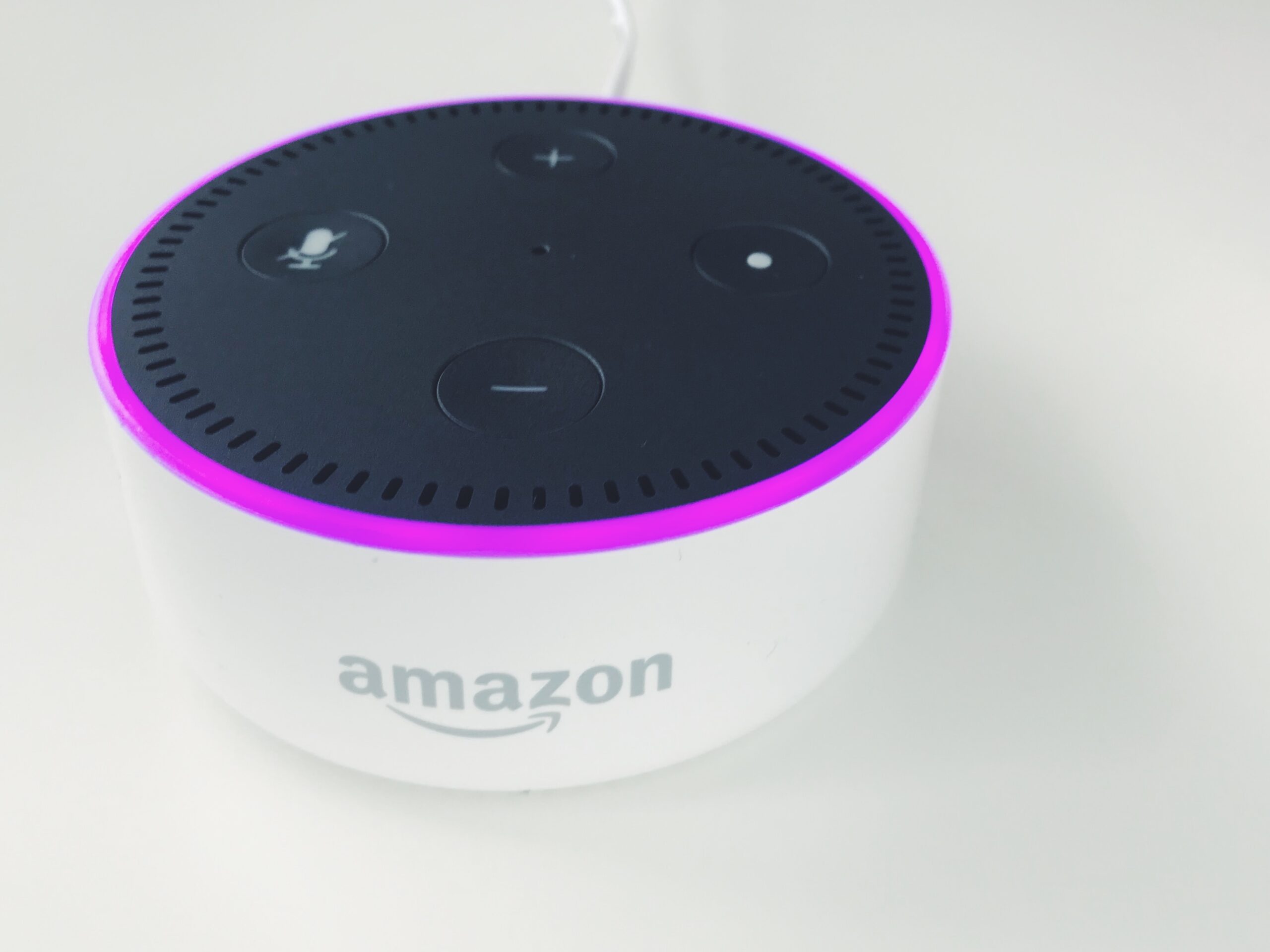The Amazon Alexa voice assistant cast a big shadow over CES 2020, the premier annual event for showcasing new consumer technology. Amazon demonstrated a number of product integrations with Alexa. They matter because they point to a possible way that Amazon could lead online advertising.
The Battle for a Voice-First Future
Amazon is fighting a fierce battle with Apple and Google to lead the uptake of voice-based products among consumers and businesses (with Microsoft and Samsung also stepping up their own efforts). More than one quarter of Americans own voice-activated smart speakers, according to Voicebot.ai and Voicify. Amazon’s Echo leads the pack, but Google is catching up, as reported in The Motley Fool.
To win the war for voice, Amazon, Apple, and Google need to collaborate with product manufacturers to incorporate their voice assistants into product design (or through aftermarket upgrades). And CES is where those integrations are demonstrated. For example, Bosch, the maker of smart home appliances such as dishwashers, announced an integration with the Apple Siri voice assistant. And a number of manufacturers ranging from Belk to GE announced integrations with Google Assistant, Google’s voice assistant.
But Amazon outflanked everyone. A wide variety of manufacturers ranging from bed maker Dux to helmet maker Jarvis demonstrated how they’re relying on Alexa to make it possible to use their products with our voices. But it wasn’t just the sheer number of integrations with manufacturers that mattered – what really caught my eye was how Amazon is making it easier for people to actually purchase things.
Making Purchases Is the Holy Grail of Voice
As I wrote in a recent blog post, people still use voice to do more mundane tasks such as checking the weather. Making purchases, though, is the Holy Grail of voice. Voice commerce is a far more complicated undertaking. And at CES 2020, Amazon showed that it is up for the challenge. Amazon announced that in 2020, automobile drivers will be able to use Alexa to purchase gasoline. As Amazon said, “Later this year, customers will be able to say, “Alexa, pay for gas” to easily purchase fuel at all 11,500 Exxon and Mobil stations. The transactions for this new Alexa feature are made through Amazon Pay and powered by Fiserv, a global financial services technology provider.
The ability to pull off voice-activated purchases requires Amazon to work closely with ExxonMobil – an example of the collaboration required to make voice a reality. If Amazon and ExxonMobil can make the purchase of gasoline as easy as making a voice command, then manufacturers and retailers will be encouraged to adopt voice for purchases, too. (Think of appliance makers turning the Amazon Dash device for order replenishment into a consistently reliable voice-first experience.)
Why CES 2020 Matters to Advertisers
Why do these announcements matter to businesses that advertise online? Well, here is a telling statistic: even though Amazon leads voice, Google pretty much owns online advertising. Google commands 37 percent of digital ad spend. The next largest competitor, Facebook, has 22 percent of the market. Amazon lags behind with 8.8 percent. But – Amazon is still very new to online advertising. It did not start dipping its toes into online advertising until 2008. Within 10 years, Amazon had become one of the big three of online advertising.
Amazon is rapidly threatening Google’s and Facebook’s leadership by offering new tools that help businesses advertise on Amazon – and off Amazon. We’ve written about some of those tools, such as my colleague Samantha Coconato’s posts on Amazon Video Ads, Amazon Display Ads, and Amazon Sponsored Ads. Those ad services capitalize on the reality that Amazon has become an increasingly popular way for people to search for products – even more popular than Google.
But Amazon knows the world is changing from text-based to voice-based search. Voice search is not “taking over.” But voice is becoming more common. Per a Microsoft study in 2019, 72 percent of people surveyed had used voice search the previous month. Amazon is preparing for the time when voice will reach a tipping point, and businesses will have no choice but to employ voice-based advertising and search engine optimization tactics into their game plans.
And that’s why the product integrations matter. By making Alexa the de facto voice assistant in everyday products, Amazon wants people to be more comfortable using their voices to use and buy things. Encouraging the uptake of voice among consumers helps Amazon position itself as the premier advertising partner for businesses.
Whether Amazon succeeds remains to be seen. But as Google and Apple compete with Amazon to integrate voice, it’s clear that advertisers need to be ready to adapt.
Contact True Interactive
To make online advertising work for you, contact True Interactive. We’re an independent agency that optimizes branded interactions to drive traffic and increase sales.
Photo by Status Quack on Unsplash
